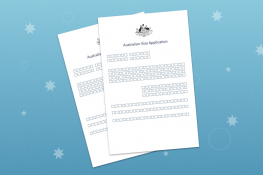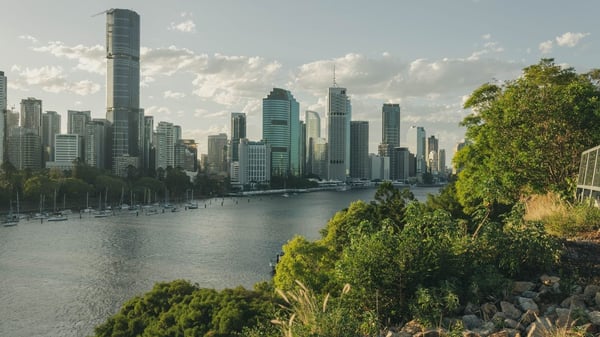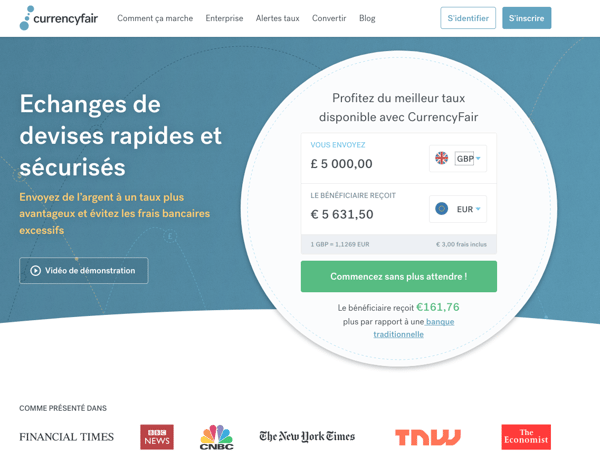2018 changes to the 457 visa: what existing and new applicants need to know.
Australia has traditionally been an attractive destination for migrants with dreams of perfect weather, surf clubs and ‘arvos spent beachside.
Changes this month to the popular Australian 457 visa matter to anyone hoping to live out their Australian fantasies of having a quick surf after work or of throwing a “shrimp on the barbie”.
In this article, we will give all the details about the changes and their likely impact on future applicants.
Employment in Australia in 2018
If you are looking to emigrate to Australia in 2018, recent economic figures would make you very optimistic about finding work as the Australian economy is in the midst of a hiring boom.
The Australian Bureau of Statistics (ABS), reports that employment grew by 16,000 in January 2018. This means Australia has now created jobs in each of the past 16 months and there is no signs of a slowdown. This month the Australian and New Zealand Banking Group reported that total job advertisements jumped 6.2 per cent in January 2018 from the previous month, indicating a healthy appetite for hiring.
Then in a twist almost as shocking as Marilyn’s return to Summer Bay, in April 2017 the Australian government announced it would replace the popular 457 visa (Temporary Work Skilled visa) and review the citizenship application process. As of March 2018, the changes became permanent.
So could these visa updates stunt Australian employment and economic growth? Will it reduce the number of skilled workers applying to work there as new criteria is in place?
Before we begin to examine the possible outcomes, we will briefly examine why the 457 Visa was created and as of March 2018, what has now changed.
History of the 457 Visa
The very official sounding “Temporary Work (Skilled) (Subclass 457)” visa was created in 1996 by the then Prime Minister John Howard for a simple reason: to fill positions that could not be filled by local workers.
According to theconversation.com, the introduction of the more commonly known 457 visa:
“ represented a significant shift in Australian immigration policy. Before this, Australia had eschewed temporary worker schemes, opting instead for large-scale permanent settlement migration. This approach valued immigrants not only as workers but future permanent residents and citizens.
Most importantly the 457 visa would allow Australia to compete internationally to attract a highly skilled workforce to its sandy shores.
“... 457 visas were introduced to achieve greater flexibility in the migration system to allow businesses to react quickly to skill shortages at times of economic growth.”
The Visa was created for the purpose of helping the Australian economy of 1996 boomerang back, which it successfully did for 20 years.
However an evolved economy and labour market meant the visa needed to reflect the latest in 21st century demands.
Updates to the 457 visa
Before this month’s changes, the 457 visa simply, and according to the Australian government website, allowed you to:
-
work in Australia for a defined period of time.
-
bring members of your family unit to work or study in Australia.
-
travel in and out of Australia as often as you want.
-
Be sponsored by an employer who nominates you for a position.
In April 2017, the Australian government led by Prime Minister Malcolm Turnbull announced an overhaul of the 457 visa including a brand new name, updates to the occupations that qualified you to apply for the visa and changes in how long the visa is valid for.
The newly named Temporary Skill Shortage (TSS) visa would now recruit in line with “national interest and allow an increase in the standards of the Australian citizenship test.
The hope is the revisions to the visa and citizenship tests would combat the displacement of Australian workers and incentivise Australian companies to “think Global, act local”.
According to Prime Minister Turnbull, with the new TSS visa,
“...We are making it easier for Australians to find work and we have restored order to our borders so we can ensure foreign workers have an opportunity to arrive through the appropriate channels....The Government will announce further measures to strengthen the integrity of Australia’s migration programme and visa systems in the near future.”
Now the TSS visa aligns with updates in other visa programmes for example the 407 visa and contains a more modern list of skills. This was needed to reflect the new occupations and job titles that have have been added to the worldwide workforce since 1996.
So let’s look at the details of exactly what has changed.
TSS visa updates March 2018
In order to update the stream the government looked at the important factors for any applicant.
The first change was renaming and qualifying the skills. Now within the TSS visa process, employers and applicants can choose between three options for the length of stay:
-
Short-term Stream:designed for Australian businesses to fill positions with foreign workers on a temporary basis when an Australian worker cannot be sourced. Duration: max two years.
-
Medium and Long term Stream: Designed for occupations or a narrower range of high value occupations that align with the Government’s long term employment strategy. Duration: max 4 years and if you are loving your life Down Under and want to make it a permanent move, you may be eligible to apply for permanent residency after three years.
-
Also Labour Agreement stream: Used for exceptional cases for example in instances where the existing visas do not apply - overseas skilled workers are hired in an agreement between the employer and the Australian government.
The 457 visa has essentially been broken out by creating these streams. And now employers must pay a contribution towards the Skilling Australians Fund or SAF which is a levy employers Employers nominating overseas workers will pay to still contribute to the development of the workforce on home soil.
Each stream now has updated conditions and applicants must now meet the following criteria for each stream.
-
Short-term Stream details:
-
Can stay for a maximum of two years
-
Can be renewed onshore once for a further two years..
-
Occupations listed in a list of Short Term Skilled Occupations (STSOL) apply
-
Have a “genuine reason” for entry.
Read more here:
- Medium and Long term Stream:
This is most like the old 457 visa. It applies to skilled occupations which the Government believes are critically needed for the longer term benefit of Australia.
- Can stay for a maximum of four years
- Can be renewed onshore and path to permanent residency after 3 years.
- Occupations listed in a list of Medium and Long-Term Strategic Skills List (MLTSSL) apply
Read more here:
And both streams must:
- Satisfy English language requirements
- Have at least two years of relevant work experience.
- Clear police checks.
How have the occupation lists changed in 2018?
To apply for a visa, there is a list of occupations that qualify you to apply for either the Medium and Long Term TSS or Short-Term TSS visa - and your occupation must be on either the list called the MLTSSL or STSOL. So, much like a typical night out in Bondi Beach, if you are not on the list, you are (possibly) not getting in.
Here we have a handy breakdown of what occupations have been added, removed or now have certain caveats applied.
For example, anyone looking to sell property in Oz, will find the new occupations a right ripper - Real Estate has now made the cut on the Short-Term TSS visa - joining Psychotherapists - which anyone in Real Estate might end up having a need for too.
Occupations added to the Short-term Skilled Occupation List (STSOL) in 2018:
-
Property Manager
-
Psychotherapist
-
Real Estate Representative
Note: these occupations come with caveats. Please find out more information on the official gov.au website here.
Occupations moved from the Short-term Skilled Occupation List (STSOL) to the Medium and Long-term Strategic Skills List (MLTSSL) in 2018:
-
Horse Breeder
-
Management Consultant
Note: these occupations come with caveats. Please find out more information on the official gov.au website here.
Occupations moved from the Medium and Long-term Strategic Skills List (MLTSSL) to the Short-term Skilled Occupation List (STSOL) in 2018:
-
No occupations will be moved from the MLTSSL to the STSOL.
Occupations removed from the 457 Visa lists of eligible skilled occupations for all skilled visa programs in 2018:
-
Building Associate
-
Hair or Beauty Salon Manager
Occupations with caveat only changes from either the MLTSSL to the STSOL in 2018:
-
Accommodation and Hospitality Managers
-
Management Accountant
-
Massage Therapist
-
Recruitment Consultant
-
Supply and Distribution Manager
-
Taxation Accountant
Are there any exceptions to the new changes?:
A number of these jobs also have additional caveats which typically limit where emigrants can move to in Australia and how much they earn.
Are other VISA programs affected by these changes?
The changes will align the Training (subclass 407) visa with other visa programs, a number of occupations which were previously not eligible for this visa will be available when the instrument comes into effect.
How much will the TSS Visa cost?
| Visa | Primary Applicant | Adult Dependent | Child Dependent |
| Short Term Stream | $1,150 | $1,150 | $290 |
| Medium Term Stream | $2,400 | $2,400 | $600 |
The TSS sponsorship fee is $420 and the nomination fee is $330.
How can the 457 visa affect your business?
In reaction, certain industries Down Under have not been saying “fair dinkum” to the visa updates.
For example in a recent article, the Australian automotive industry outlined how the visa update will mean a cost of $20,000 to each automobile company for any TSS visa-holding worker - previously this amount was $12,000. But now there is an additional $8,000 required to fund the national apprenticeship scheme or SAF - all part of the new visa requirements.
From small business to the big guys, every employer has had to consider the changes. Many tech companies in Australia often need to bring in top-management level skilled people from overseas, mainly the US, who have the necessary skills to develop and run a rapid-growth tech company. Companies are taking issue with the visa changes, saying it restricts the path to permanent residency for immigrant workers.
One positive outcome of the visa update came for any budding overseas entrepreneur. There is now an updated visa planned, designed specifically for foreign investors or entrepreneurs with a strong business plan and a dream to open their business in Australia.
Expected to be rolled out later in 2018, it will be part of an effort to plan for new Australian jobs. An entrepreneur visa does currently exist but requires a mandatory capital backing of $200,000 which the new visa will not.
With all these new changes, employers must review the status of their current employees on 457 visas or face sanctions. Businesses are advised to review their HR policies and strategy for hiring on temporary visas, as the new visa will also include a strengthened training obligation for employers.
FAQs about the 2018 Australian Visa changes:
As a visa application can take anywhere from 5-11 months, there were many applications already underway when the changes arrived. Here are some answers to questions that existing or pending visa holders might have:
What does this mean for anyone who has a 457 Visa or has applied for one?
These changes will only impact applications lodged on or after 17 January 2018.
Applications lodged before this date will not be impacted.
Also if you are in Australia when you make an application and you do not hold a current visa, or you hold a bridging visa, additional requirements apply.
What if I already hold a subclass 457 visa?
If you hold a subclass 457 visa already, then you can continue to hold your visa until its expiry. You will not be impacted by these changes unless you seek to apply for a further subclass 457 visa or change employers.
If I already hold a subclass 457 visa, can I apply for a family member to join me?
Secondary visa applicants can apply to join a primary subclass 457 visa holder in Australia. If approved, the secondary applicant’s visa period will match the visa period of the primary visa holder.
If I already hold a subclass 457 visa, can I change employers?
Yes, however, if you hold a subclass 457 visa and want to change employer or position, a new nomination will need to be lodged and approved for you. The nomination must be for an occupation that is on the Medium and Long- term Strategic Skills List or the Short-term Skilled Occupation List.
How often will the occupation lists be reviewed?
The STSOL and MLTSSL will be reviewed every six months, based on advice from the Australian Department of Employment. See here.
What does this mean for anyone entering Australia in 2018?
Here is a summary of what you need to keep in mind when applying for an Australian TSS visa in 2018:
- For individuals:
-
-
a requirement for visa applicants to have at least two years’ work experience in their skilled occupation
-
mandatory labour market testing, unless an international trade obligation applies,
-
capacity for only one onshore visa renewal under the Short-Term stream
-
capacity for visa renewal onshore and permanent residence eligibility after three years under the Medium-Term stream
-
- For Employers:
-
-
a non-discriminatory workforce test to ensure employers are not actively discriminating against Australian workers
-
a requirement to pay a contribution to the Skilling Australians Fund (subject to legislation passing).
-
As always, we will keep posting about any of the relevant updates to visas or working in Australia.
HELPFUL LINKS:
The portal to start your online application is here:
An applicants checklist can be found here
An FAQ sheet from the Australian Government can be read in full here.
This guide is provided for general information purposes only and is not intended to be a substitute for professional advice regarding any aspect of the Australian visa process. CurrencyFair cannot be held responsible for the consequences of decisions or actions you may choose to take in connections with the Temporary Skills Shortgage Visa or any visa referenced above.
















